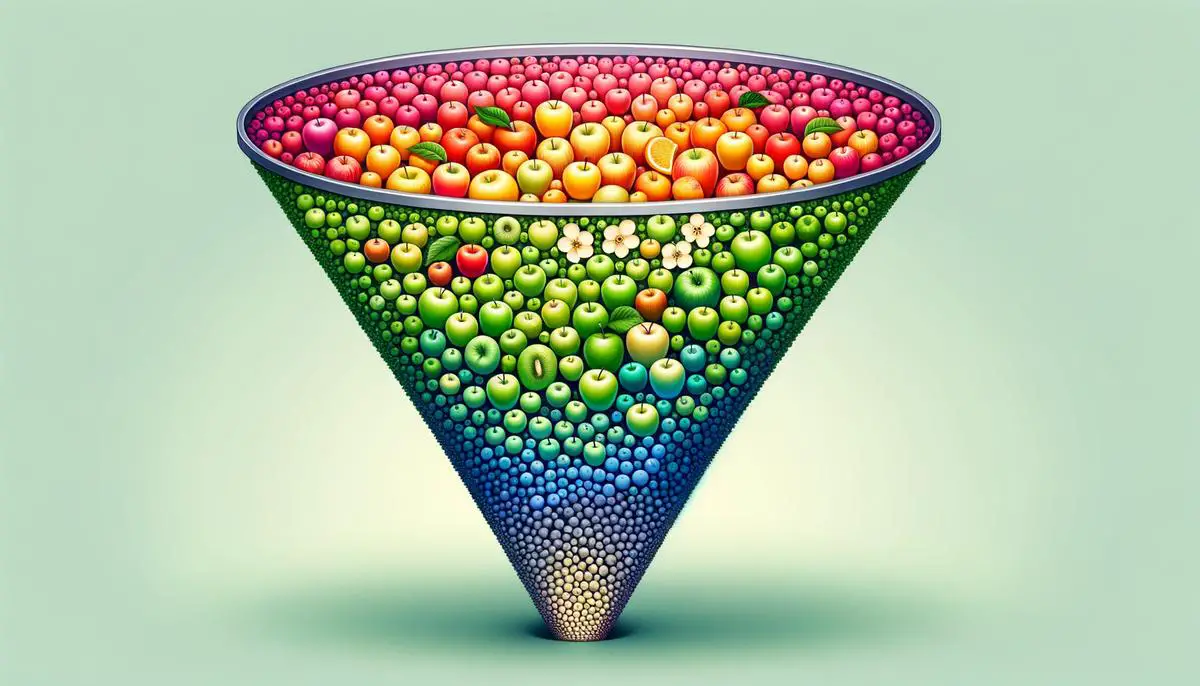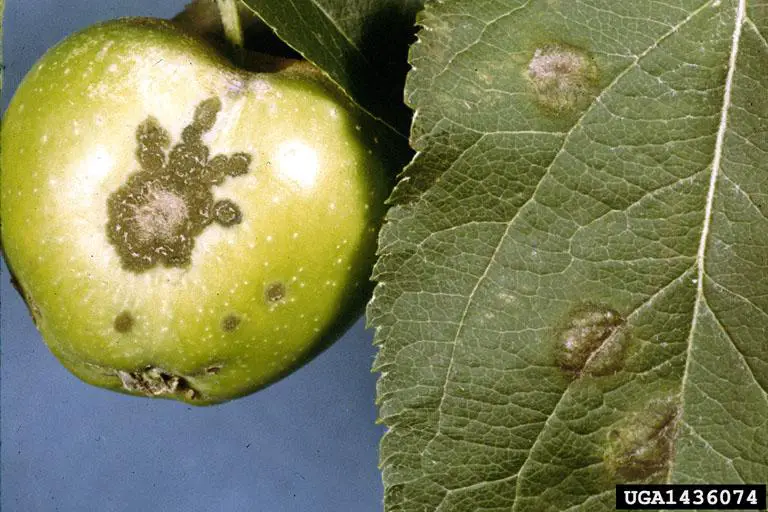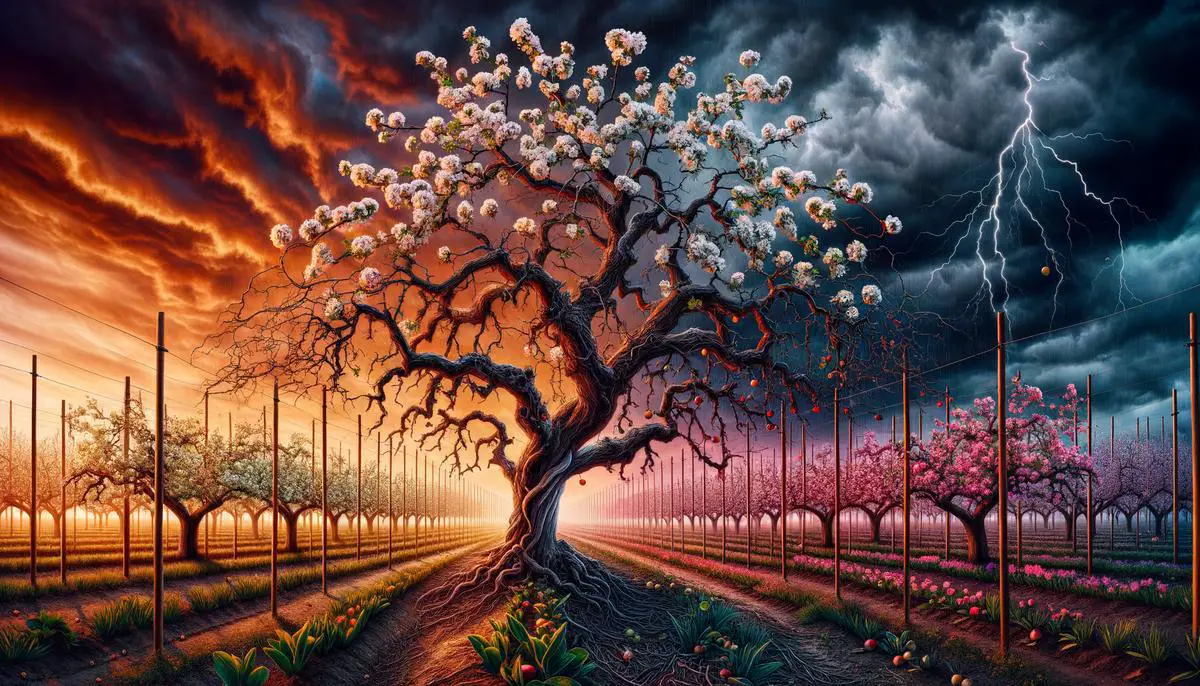Apple farming has plummeted into the pitfalls of industrial agriculture, marked by genetic erosion and loss of diversity. Welcome to the wild West of apple monocropping where a small number of high-yielding but genetically similar cultivars reign supreme. Let's explore this apple conundrum together.
Genetic Erosion and Loss of Diversity
Historically, apple varieties were incredibly diverse. Central Asia sprouted the original wildlings before they spread to Europe and other continents. At one point, more than 20,000 cultivars thrived—that's a lot of flavor packed in small fruits. But as commercial agriculture took over, the jaw-dropping diversity shrank into a sad, nearly monochrome palette. Now, "Golden Delicious," "Gala," "Fuji," and "Granny Smith" dominate nearly the entire apple market.
Industrial apple farming has shifted focus to yield uniformity and shelf life, the hallmark of commerce-driven cultivation. This approach wiped out numerous diverse varieties, leaving only the fittest to survive the uniformity treadmill. The once abundant heirloom varieties have become rare finds at carefully curated farmers' markets, a touch of the exotic in the applesauce aisle.
The consequences are severe. Monocropping is a devil in disguise. By limiting genetic variation, we've created a botanical sitting duck. One ugly bout of disease could wipe out entire apple crops. Apple scab alone, a dreaded fungus, can cause losses up to 70%. Farmers rely heavily on pesticides, spraying their crops up to 18 times a season to combat these stubborn pests.
Climate change adds another layer of drama. As perennials, apples suffer from fickle weather; one minute it's all sunshine, the next it's frostbite from a sudden cold snap. Changes in bloom times can lead to significant productivity losses and poor fruit quality. Early blooming times, coupled with increasing precocious frost threats, spell trouble for apple varieties like 'Red Delicious.' Even 'Fuji' has felt the impact of climate change—early blooming and rising temperatures have affected its firmness and flavor.
The apple industry needs a renaissance, a return to the days when biodiversity was essential, not an afterthought.
Imagine a world where varieties aren't abandoned and the apple doesn't fall victim to its own commercial success. If we don't change course, genetic erosion will erode not just our apples but also their legacy. Now that's food for thought.

Pest Pressure and Resistance Breakdown
Modern-day apple cultivars are under constant siege! Pests and diseases are like that annoying relative who shows up uninvited and never leaves—a persistent thorn in the orchard's side. Because our apple monocultures are practically a buffet for these uninvited guests, the over-reliance on single resistance genes has turned out to be a flawed strategy.
Apple scab, the Darth Vader of fungal afflictions, doesn't just knock politely; it kicks the door down and makes itself at home in apple orchards worldwide. Relying on the Rvi6 (Vf) gene for resistance seemed like the ultimate solution. It was supposed to be the Excalibur against fungal infections, but the apple scab fungus adapted. It was like leaning on a broken crutch—those gene-reliant trees fell hard when apple scab races 6 and 7 emerged, capable of bypassing that once-mighty resistance.
Let's not forget the bacterial nemesis: fire blight. This destructive force is brought to you by Erwinia amylovora, a bacterial fiend that thrives in humid, wet conditions. Fire blight spreads quickly—like gossip at a high school reunion—and wipes out not only the fruit but sometimes even the entire tree. Despite high-tech countermeasures and an arsenal of bactericides, management remains challenging, thanks to resistant bacterial strains that evolve rapidly.
In response to these persistent issues, farmers have increased pesticide use dramatically. We're talking regular and heavy-duty applications—up to 18 sprays per growing season—to fend off these relentless pests. Pesticides are the modern-day farmers' weapon, but over-reliance spells trouble, not just for ecological health but also for the sustainability of farming practices.
The very cultivars that embody commercial success—the uniform superstars like 'Golden Delicious' or 'Fuji'—are also the soft underbelly in this relentless war against pests. Their genetic uniformity makes them susceptible, a weakness that monocropping has amplified to dangerous levels. When your army lines up in neat rows, bombarded with pesticides day-in and day-out, it's only a matter of time before the enemy—emboldened and evolved—breaks through.
The Solution: Polygenic Resistance
- Relies on multiple genes for pest and disease resistance
- Diffuses risk
- Makes it harder for pests to adapt
- Lays down a suite of defense mechanisms
The way forward isn't paved with a monoculture monocle; it's fortified with a multitude of heirloom and disease-resistant varieties that can stand strong against nature's whims. The apple industry's survival and its gallant rebirth depend on embracing biodiversity and championing the stalwart resistances hidden in untapped apple genetics. Because, friends, the pests and pathogens may be sly and adaptable, but with the right genetic arsenal, our apples can shine brighter, juicier, and more resilient than ever before.

Climate Alterations and Variability
Apple trees are like the drama queens of the fruit world, perpetually at the mercy of Mother Nature's fickle temper. One day she's gentle and kind, bestowing warmth and sunshine; the next, a capricious frostbite nips the buds, and all bets are off. Climate change isn't just a minor inconvenience—it's shaking up the apple industry like an unwelcome guest who won't leave, disrupting phenological stages and making apple farming unpredictable.
When bloom times start playing hopscotch with air temperatures—thanks to global warming—the delicate dance of pollination and fruit set gets thrown out of rhythm. Your 'Red Delicious' apples, usually early bloomers, now face the grisly fate of frost damage, turning an otherwise promising season into an orchard horror show.
This isn't just a seasonal hiccup; we're talking about a long-term shift in apple phenology. Higher winter and spring temps mean early blooming, which collides headfirst with the treacherous whims of late frosts. It's like nature's cruel joke: just when you think you've got a handle on your blossoming schedule, the temperature rises by a single degree, and BAM—blooming happens five days earlier, leaving young buds vulnerable to frost damage.
Heat waves during the summer can wreak havoc on apple quality and yield. 'Fuji,' that crunchy yet sweet delight, has witnessed a sour twist in Japan over the last three decades. Rising temperatures have softened its crunch, downgraded its tartness, and torpedoed its storage life. No one asked for a 'mushy Fuji,' just as no one demands a concert without proper acoustics.
Add water—or lack thereof—into this climatic cocktail, and you've got another layer of complexity. Inconsistent rainfall patterns, droughts, and sudden downpours make irrigation a nightmare, not to mention the risk of waterlogging roots or the absence of essential chilling hours needed for apple dormancy. Without enough chill, apples may wake up groggy, producing lackluster blooms and, consequently, stunted yields.
Farmers are already feeling the pinch, noticing both subtle and dramatic changes in their orchards. The Appalachian North Carolina farmers, custodians of one of the oldest orchard areas in the United States, can't help but recount instances of increased frost and hail damage, exacerbating pest infestations. It's as if the climate's chaos feeds a vicious circle, piling pressure on stressed ecosystems and susceptible apple varieties.
Future-Proofing Apple Farming
- Embrace resilient practices and genetic diversity
- Explore heirloom varieties for hardiness
- Understand regional climatic nuances
- Implement intelligent irrigation systems
- Utilize protective polytunnels
- Develop frost mitigation strategies
The stakes are high, but the rewards—a more diverse and adaptable apple industry—are worth every ounce of effort. Because let's face it, an earnest, flavor-rich bite into a perfectly grown apple is a joy worth preserving against the ticking climate clock. So here's to battling the elements and future-proofing our beloved apples, one carefully plotted bloom at a time.

Legal and Market Challenges
Regulatory hurdles are becoming serious roadblocks for Apple. As the company grapples with antitrust lawsuits and fines, it's like watching a tech giant suddenly thrust into a legal drama. Who'd have thought the pristine fruit's tech sibling would be wrestling with courtroom sagas and international disputes?
The Justice Department's antitrust lawsuit is a major concern, challenging Apple's control over the iPhone. Federal insiders have been pointing out Apple's tactics of favoring its own apps and services while hindering competitors like PayPal and Garmin. It's as if Apple set up a velvet rope at the swankiest club in town, letting only its favorites through.
The main issue? Apple's control over core features on its devices, like its Near Field Communication (NFC) chip and notification system. The competition claims Apple's tactics are unfair, and with the feds bearing down, Apple might need to adjust its strategy.
European Challenges
- European Commission: €1.8 billion fine for hobbling music streaming competitors
- Netherlands: Restrictions on dating app payment systems
- South Korea: $15.4 million fine looming for unfair practices
Margrethe Vestager, the iron lady of competition policy, didn't mince words—Apple's internal advantage harmed millions of European users.
Epic Games vs. Apple: While Apple largely prevailed, the federal court ruled that Apple did violate California's competition laws. Now we're watching Epic's renewed challenge with other tech giants cheering from the sidelines.
Apple's strategy involves tweaking commission rates and adding alternative payment options where necessary. They're balancing compliance with strategic foot-dragging, just enough to placate regulators without fully opening the gates.
Market Competition Heats Up
Microsoft has usurped Apple as the most valuable tech company, thanks to early investments in generative AI. Apple's delay in the AI race has Wall Street on edge; investors are clamoring for AI-driven products. Tim Cook's assurances of something big coming later this year only add to the suspense.
Through this regulatory and competitive storm, Apple's innovation machine keeps churning. The upcoming Vision Pro headset, while niche, showcases their ambitious vision. It's one futuristic gem in a trove of high-risk projects that might redefine computing.
Apple's juggling act between legal perils and market challenges will shape its evolving strategy. With careful maneuvers, embracing broader competition, and tapping into their innovation reservoir, Apple's resilience will be tested but not broken.
The battle is far from over and deliciously unpredictable!
The apple industry needs a renaissance, a pivot back to the days when biodiversity wasn't a charming afterthought but the essential core. Imagine a world where varieties aren't abandoned and the apple doesn't just become a victim of its own commercial success. The current trajectory might lead us to a future where the only nostalgia left is dredged up by a rare sighting of heirloom apples in heritage orchards.
If we don't change our course, genetic erosion will erode not just our apples but also the legacy they carry. Consider these alarming facts:
- Over 90% of apple varieties grown in the 19th century have disappeared1
- Just 15 varieties account for 90% of apple production worldwide2
- Genetic diversity in apples has decreased by 55% since the 1960s3
Now that's food for thought.